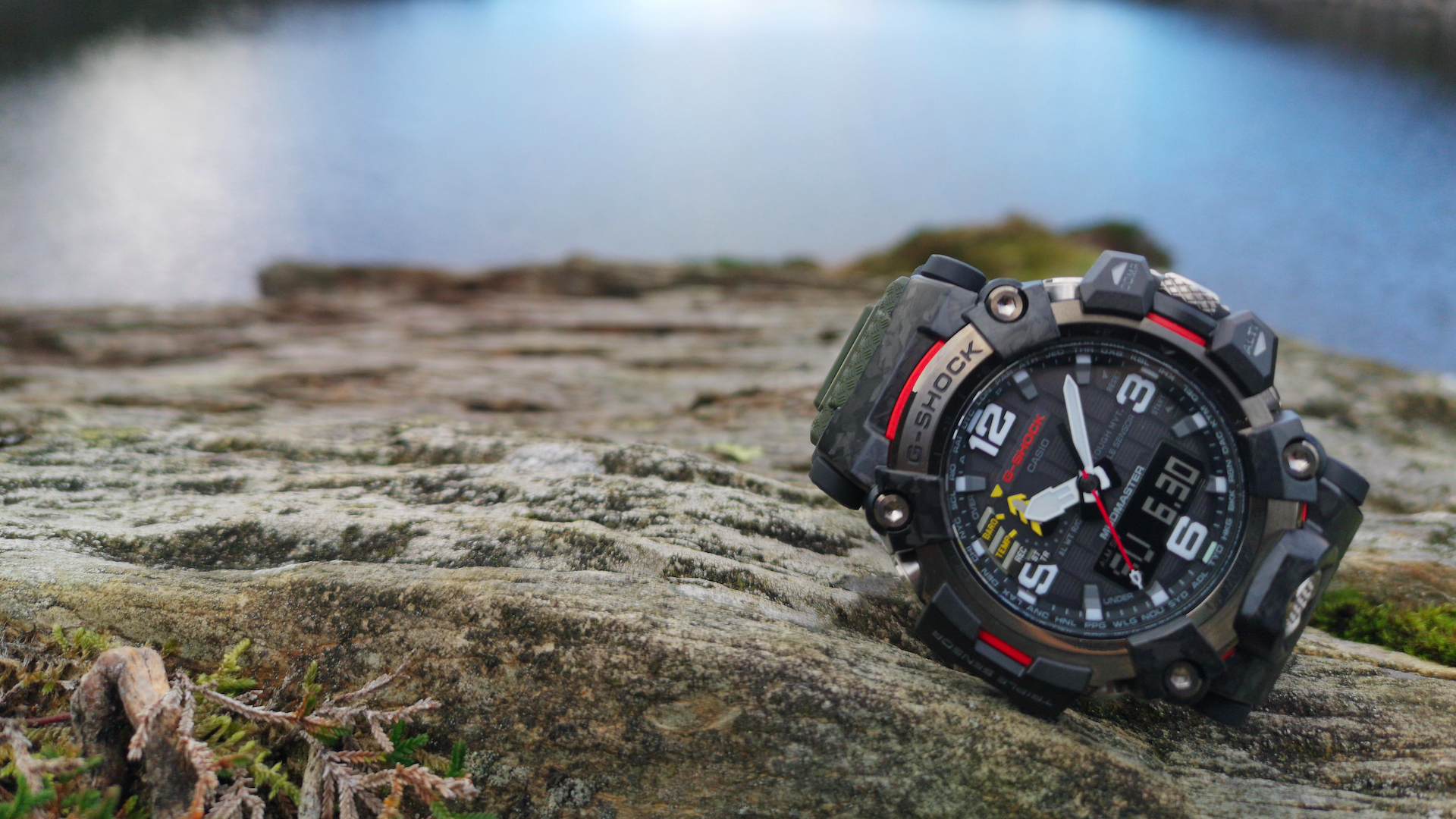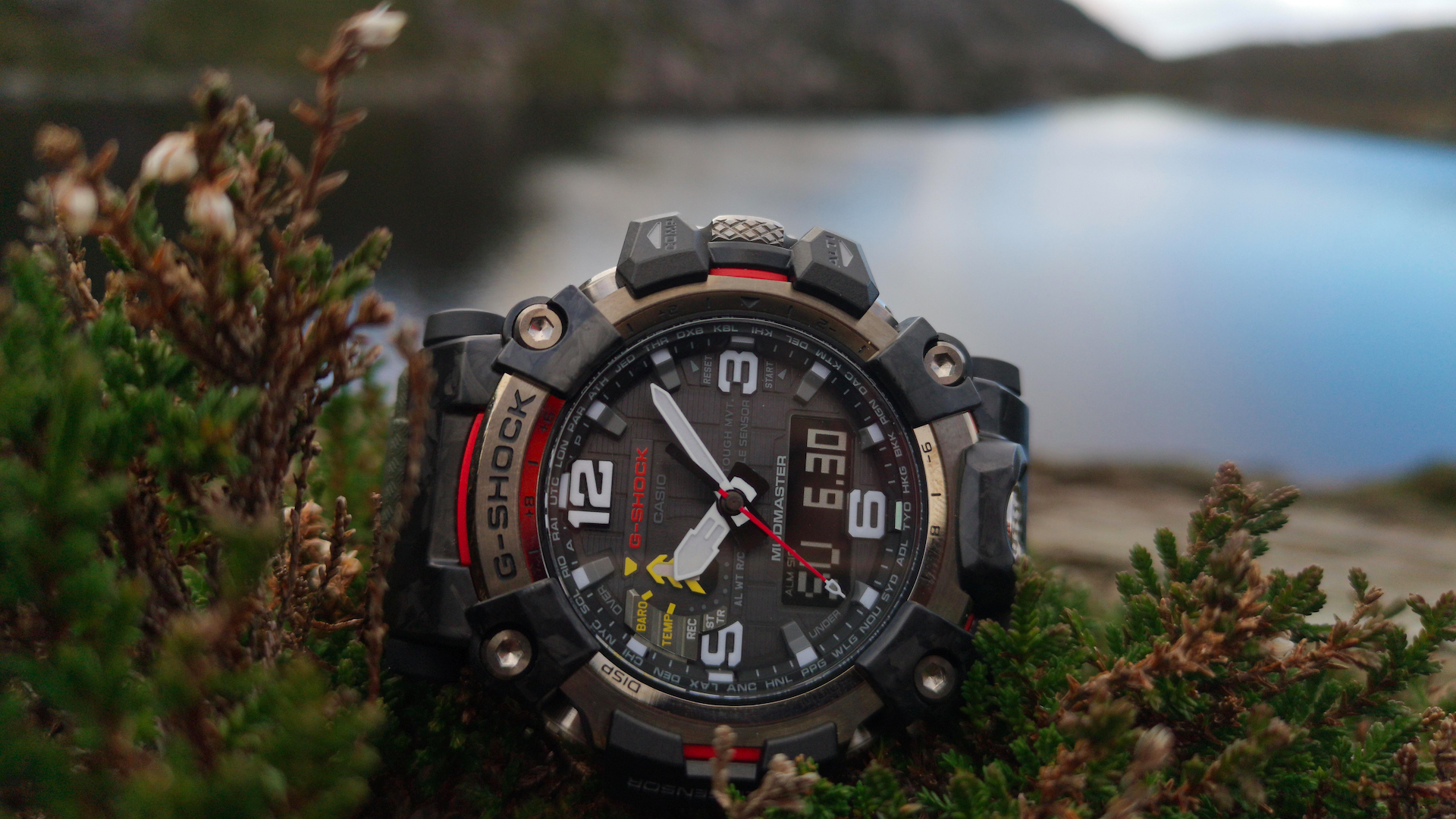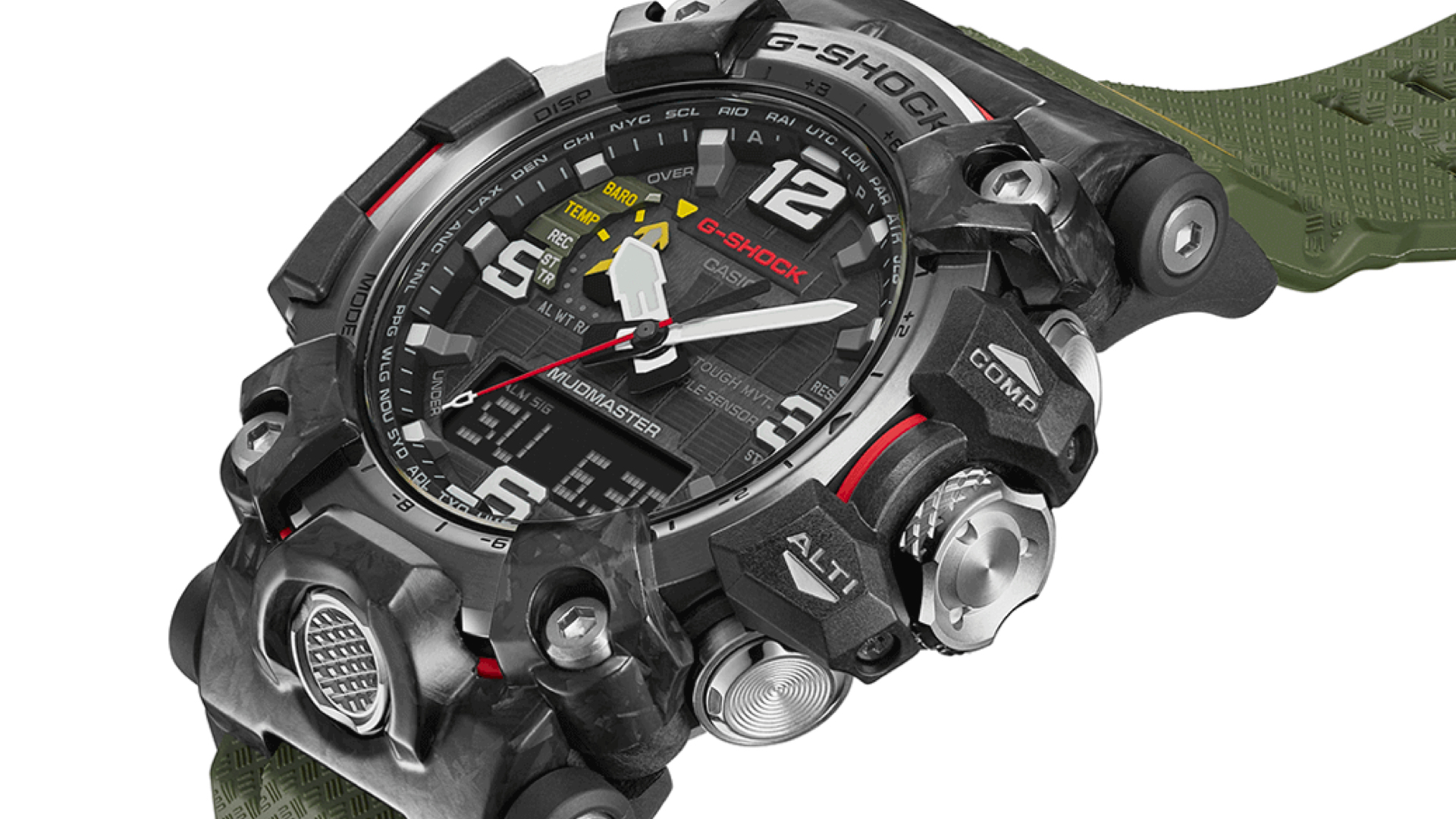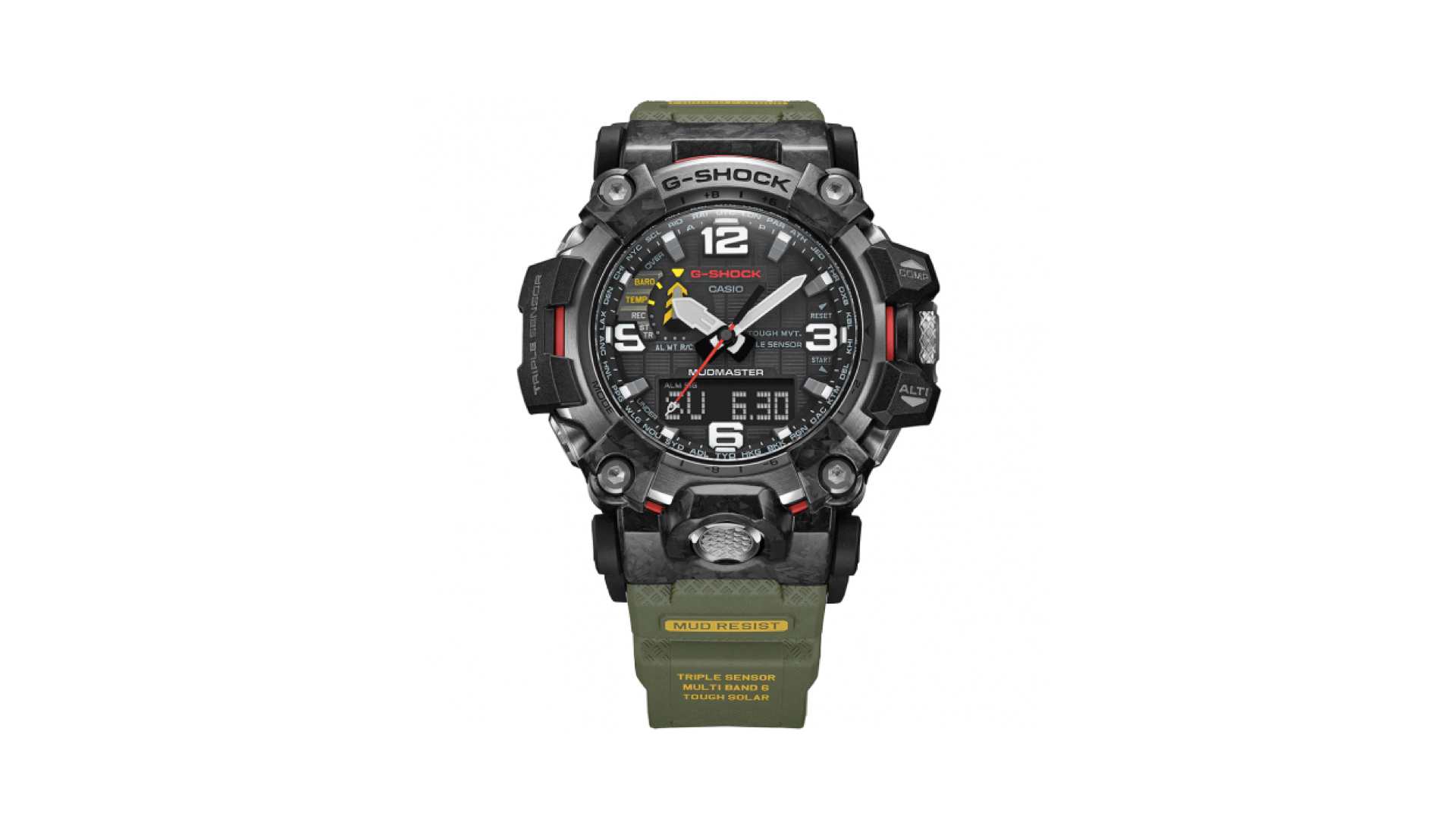Advnture Verdict
The Mudmaster is big, bold and burly, and in looks alone it is likely to polarize opinion. But there’s no denying its rugged reliability. It also boasts some pretty impressive on-board tech plus a tough solar quartz movement that is ideally suited to life off-grid, making it an extremely solid and dependable outdoor watch.
Pros
- +
Ultra rugged and robust
- +
Fully featured
- +
Solar powered movement
Cons
- -
Thick, chunky and heavy
- -
Expensive
You can trust Advnture
G-Shock Mudmaster GWG-2000: first impressions
Whether the G-Shock Mudmaster GWG-2000 is a true field watch is perhaps debatable, but there’s no denying that it’s a popular choice amongst modern military servicemen and women – so it undeniably sees plenty of use “in the field”. Plus, the qualities that make it fit for the battlefield also ensure it’s a great choice for life in the great outdoors. That’s why we’ve included it in our best field watches buying guide.
• RRP: $800 (US) / £699 (UK)
• Dimensions: 61.2mm (lug-to-lug) x 54.4mm (case diameter)
• Thickness: 16.1mm
• Weight: 106g / 3.7oz
• Movement: Solar quartz
• Water resistance: 200m / 20 ATM
• Materials & features: Carbon Core Guard case with steel crown and steel-forged carbon bezel; stainless steel case back; world time, date, alarm, stopwatch, timer, altimeter, barometer, thermometer and compass functions; sapphire crystal; resin strap
It uses Casio’s patented Carbon Core Guard resin case, which incorporates carbon fiber for increased strength without additional weight. The GWG-2000 is actually 1.9mm slimmer and 13g lighter than its predecessor (the GWG-1000), while the lugs, shock absorbers and internal casing also now incorporate carbon fiber elements. Inside the case, the watch module is suspended in a hollow structure to protect against impact and vibration. Redesigned pusher buttons with stainless steel button pipes and a silicone buffer further improve overall resistance to muck and mud.
The chunky bezel ring and knurled screw-down crown are both made of stainless steel. Screw-down forged carbon bezel guards at 12 o’clock and 6 o’clock protect the sapphire crystal, which is finished with an anti-reflective coating for maximum legibility. A patented gasket design provides a water resistance rating of 200m (20 bar). The watch also comes on a robust resin strap that is highly resistant to wear and tear, though it is fairly stiff and unforgiving, especially when you first strap it on the wrist.

Like most G-Shocks, the Mudmaster has plenty of wrist presence, by which we mean it is hefty and bulky. If you’re slender of wrist, it’s probably going to look a bit silly. But perhaps that won’t bother you, especially if you’re the sort of user who prioritizes function over form.
And talking of function, the new Mudmaster has plenty of features. It boasts a five-day alarm with snooze function: an optional hourly beep; an automatically adjusting calendar; a battery level indicator with auto power save if the watch is low on charge; a 60-minute countdown timer, date and weekday display; analog time with a Neobrite luminous coating on the watch hands and indices for low-light illumination (improving on the previous version and other Mudmasters in the current range), multi-band 6 automatic atomic timekeeping; LED backlight with selectable 1.5 or 3-second duration; a 24-hour stopwatch accurate to 1/100th second (with elapsed time, split time and 1st-2nd place times); and a world time function that displays the current time in major cities and regions across the globe.
An in-built sensor is also able to give altitude, barometric and temperature readings. The watch measures barometric pressure, which is converted to relative altitude, measuring from -700 to 10,000m (-2,300 to 32,800ft) within a range of 1m or 5ft. The watch also measures ambient air pressure and presents this on a display to indicate weather patterns. The thermometer can measure air temperature from -10°C to 60°C (14°F to 140°F). Lastly, a direction sensor detects magnetic north, displaying both this and your current direction on the watch face, in compass points and degrees.
G-Shock Mudmaster GWG-2000: in the field

Do all the fancy gizmos work? Yes, mostly. Once calibrated, the compass is impressively accurate, and the barometer indicates rising or dropping pressure, giving you a clue as to whether bad weather is likely to move in. The altimeter is slightly less precise – at least, it didn’t always correspond with the spot heights indicated on our map. We also had mixed results with the temperature sensor.
All the latest inspiration, tips and guides to help you plan your next Advnture!
But in terms of timekeeping, the Mudmaster is spot on. Its solar quartz movement is accurate to within 15 seconds per month. This is further aided by an automatic hand adjustment function, which checks the home position of the hands every hour and corrects if necessary, counteracting any discrepancies arising from impact or magnetic forces. Basically, you have no excuse to be late ever again.
Unfortunately, though the time is easy to read, the other functions aren’t always the easiest to navigate. At least a new “Smart Access Interface” mdoes make things slightly easier; rather than cycling through the menu options with endless button presses, you can just rotate the crown for faster and more intuitive control over all functions.

A couple of other modifications have also been added to aid general user-friendliness. First up is a hand shift function, which means that you can push a button to temporarily move the hands move away from the LCD display – helping you to see what you’re doing. And if you’re using the watch at night, an auto light feature can be activated to automatically illuminate the watch face when you tilt your wrist towards you. That proved handy for checking the time while huddled in a warm sleeping bag, when rain hammering on the flysheet of the tent woke us up at 3am.
In design terms the Mudmaster offers few concessions to style or looks. Whether this is the watch for you depends on how you feel about its chunky dimensions and the unapologetically robust build. But if you’re looking for rugged reliability in all environments, plus a fair bit of on-board tech, then there’s probably no better all-round outdoor watch out there.
I would call it a genuine upgrade on the older GWG-1000, being fractionally slimmer and lighter, with better lume. The price tag is comparable to an entry-level Swiss-made automatic watch or higher-end GPS watches. But the GWG-2000 is tougher than either of those alternatives, and I reckon it’ll outlast anything made by Garmin or Suunto. And though a regular steel watch is going to be a bit more wearable and versatile, not even the most complex of mechanical movements has as much adventure-ready functionality as the G-Shock Mudmaster.
An outdoors writer and editor, Matt Jones has been testing kit in the field for nearly a decade. Having worked for both the Ramblers and the Scouts, he knows one or two things about walking and camping, and loves all things adventure, particularly long-distance backpacking, wild camping and climbing mountains – especially in Wales. He’s based in Snowdonia and last year thru-hiked the Cambrian Way, which runs for 298 miles from Cardiff to Conwy, with a total ascent of 73,700 feet – that’s nearly 2½ times the height of Everest. Follow Matt on Instagram and Twitter.


